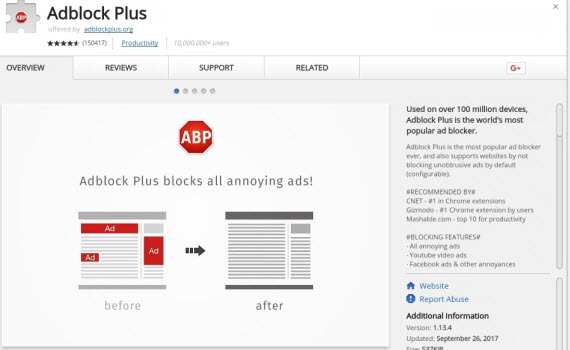

So if you’ve recently installed Adblock Plus and are being spammed with these ads, it’s best to follow Adblock’s advice or just reinstall the software. It also appeared with a capital “B” and was shown as “AdBlock Plus” instead of the legitimate “Adblock Plus” with a lowercase “b.”Įngadget also reported that one user experienced invasive ads after accidentally installing the fake software.
The fake Adblock Plus was also tagged as an “App” on the Chrome Web Store and not an “Extension” as the real one is. If it does, it is most likely legitimate, said Adblock. Users will be redirected to the download page on the Chrome Web Store where they are advised to check for the “offered by ” label. Next, find Adblock Plus, and click Details. Users who may have downloaded the extension recently are advised to check if they have the real one by going to Chrome > More Tools > Extensions. In reaction, Adblock published a blog post telling people how to make sure that they have the real Adblock Plus. ZtY5WpSgLt- SwiftOnSecurity October 9, 2017 Google allows 37,000 Chrome users to be tricked with a fake extension by fraudulent developer who clones popular name and spams keywords. Offers impressive levels of customization. The fake version was downloaded 37,000 times before it was discovered by systems security expert SwiftOnSecurity: AdGuard - A great stand-alone ad-blocker with an excellent browser extension for Chrome.

MANILA, Philippines – A fake version of the web’s most popular ad-blocking software, Adblock Plus, recently made its way to the Chrome Web Store before it was taken down by Google.


 0 kommentar(er)
0 kommentar(er)
